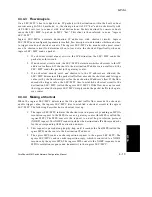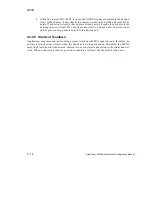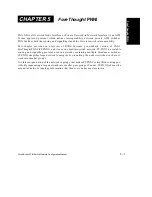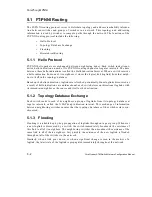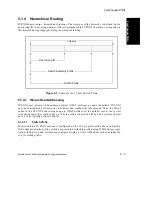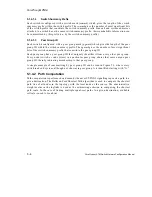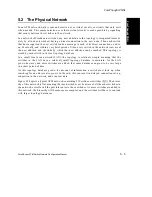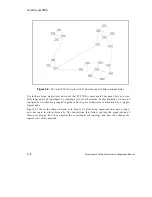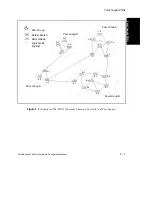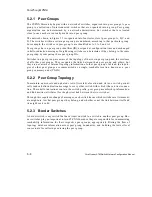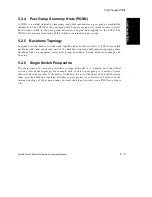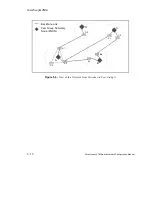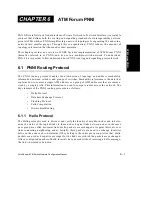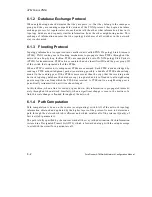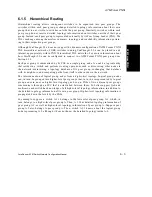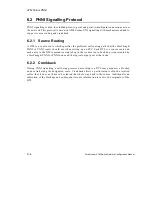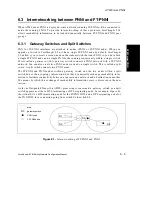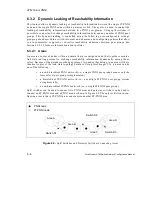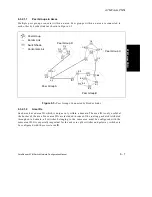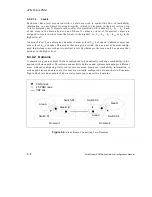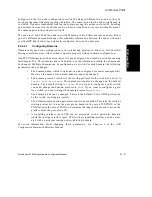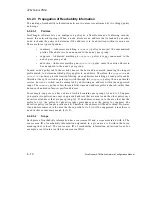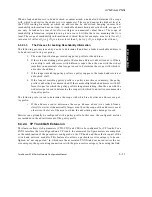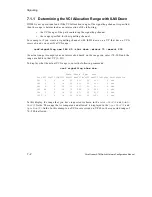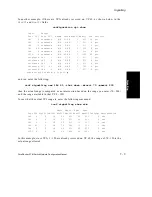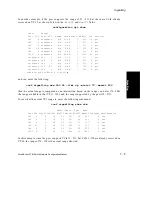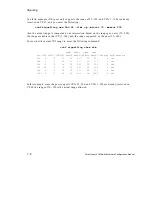
ForeRunner ATM Switch Network Configuration Manual
6 - 3
A
T
M F
o
rum
PNNI
ATM Forum PNNI
6.1.5 Hierarchical Routing
Hierarchical routing allows contiguous switches to be organized into peer groups. The
switches within each peer group exchange detailed topology information about their own
group that is not visible to switches outside the peer group. Similarly, switches within each
peer group do not receive detailed topology information about switches outside of their peer
group. Instead, each peer group is represented externally by its Peer Group Leader (PGL). The
PGLs exchange among themselves summary topology and reachability information pertain-
ing to their respective peer groups.
Although ForeThought 5.2.x does not support the dynamic configuration of ATM Forum PNNI
PGL hierarchical networks, FORE switches running ForeThought 5.2.x can be placed in and
interact appropriately within PNNI hierarchical PGL networks. For more information about
how ForeThought 5.2.x can be configured to connect two ATM Forum PNNI peer groups, see
Section 6.3.1.
Each peer group is summarized by its PGL as a single group node. A node is a logical entity
that resides in a switch and performs routing operations such as discovering other nodes in
the network, maintaining a topology database of its peer group, exchanging that database
with its neighbors, and computing paths from itself to other nodes in the network.
The interconnection of logical group nodes form a higher-level topology. Logical group nodes
can, in turn, be grouped into higher-level peer groups that, in turn, are represented by logical
group nodes in an even higher level topology, and so on. PGLs of two adjacent peer groups
communicate through an SVC that is established between them. To better support QoS and
multicast, each switch has knowledge of all higher-level topology information, in addition to
the detailed topology information of its own peer group. Higher-level topology information is
propagated down the levels by the PGLs.
For example, suppose a switch A.1.1 belongs to the lowest-level peer group A.1, which, in
turn, belongs to a higher-level peer group A. Then, A.1.1 has detailed topology information of
peer group A.1, as well as higher-level topology information of peer group A. Suppose peer
group A.2 also belongs to peer group A. Then, switch A.1.1 knows about the logical group
node representing A.2, although it does not know the detailed topology inside A.2.
Summary of Contents for forerunner series
Page 6: ......
Page 16: ...TOC 10 ForeRunner ATM Switch Network Configuration Manual Table of Contents ...
Page 20: ...LOF 4 ForeRunner ATM Switch Network Configuration Manual List of Figures ...
Page 22: ...LOT 2 ForeRunner ATM Switch Network Configuration Manual List of Tables ...
Page 30: ...viii ForeRunner ATM Switch Network Configuration Manual Preface ...
Page 144: ...3 58 ForeRunner ATM Switch Network Configuration Manual Configuring an Emulated LAN ...
Page 180: ...6 12 ForeRunner ATM Switch Network Configuration Manual ATM Forum PNNI ...
Page 220: ...9 6 ForeRunner ATM Switch Network Configuration Manual Configuring Timing ...
Page 300: ...D 24 ForeRunner ATM Switch Network Configuration Manual Configuring FramePlus Modules ...
Page 308: ...Acronyms 8 ForeRunner ATM Switch Network Configuration Manual Acronyms ...
Page 346: ...Glossary 38 ForeRunner ATM Switch Network Configuration Manual Glossary ...
Page 352: ...Index 6 ForeRunner ATM Switch Network Configuration Manual Index ...

